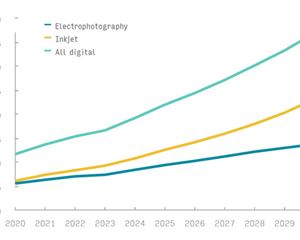Colour Management - Part Eleven
Kiran Prayagi, print technologist and chairman, Graphic Art Technology & Education demystifies colour management in a series of articles. In this eleventh article, he discusses how colour reproduction fundamentals.
08 Jul 2013 | By Kiran Prayagi
Before going to colrimetry description and digital methods it is of utmost importance to understand certain fundamentals common to all, whether analogue or digital processes. From previous articles it is well understood by now that additive and subtractive methods are well represented by following diagrams. See figure 1.
Additive indicates three basic colours red, green, blue mixed with light beams produce white and any two combined produced secondary colours cyan, magenta, yellow, going from black to white. Subtractive indicates cyan, magenta, yellow secondary colours (printing primaries) combined on white substrates produces black (actually dark muddy colour due to pigment and dyes defects) and any two combined produces primary colours red, green, blue (printing secondary’s) thus going from white to black. Additive example is television or a computer monitor.
Reproduction problem starts when not enough colour or other colours start interfering with this fundamentals. To put simply study the following tables in light of the figure 1.
This brings us to what may be called as rule of five for colour reproduction. Consider following simple primary and secondary colours with full coverage. See figures 2 to 5.
Reproduced colours are the primary, secondary colours expected to achieve in any colour reproduction whether photography, television, or printing. How these are achieved is shown in figure 3 for television, figure 4 for analogues photography and figure 5 for printing processes. The situation shown here is ideal and is not quite achieved in practice, and hence a need for colour correction at some stage in the process.
Television system is additivie and works with only three channel images, i. e. red, green, and blue. To reproduce colours as indicated in figure 2 each of the three channels should excite the phosphors as shown in figure 3. For example, red channel image should excite red phosphors in white, red, magenta, yellow, and 3-colour area (same as white). Red phosphors in remaining colours should not be excited. Similar is the case for green and blue phosphors.
This means each of the channels has five where phosphors are excited. These may be called ‘wanted colours’ and where phosphors should not be excited can be called ‘unwanted colours’. In case of television these will be without excited phosphors and hence no light, therefore, black.
Analogue photographic systems are subtractive and again works with only three channel images, i. e. cyan, magenta, and yellow. To reproduce colours as indicated in figure 2 each of the three channel images should again have dye contained in the five ‘wanted colours’ and leave ‘unwanted colours’ without colour dye. In photo prints these will be without dyes and hence white paper is uncovered.
Printing systems like analogue photographic systems are subtractive but works with four colours including black to extend the tonal range and add depth in the dark colours. To reproduce colours as indicated in figure three of the colour printers should print in the five ‘wanted colours’ and leave ‘unwanted colours’ without ink on substrate. Black ink is printed only where required and does not follow a rule of five.
Colour reproduction problems start creeping in when some colours appear in the ‘unwanted colours’ making the reproduction dark and muddy. In colour correction process these are removed to approach ideal colour channels or separations as outlined above. When wanted colours do not carry enough colours then reproduction appears lighter.
In case of television systems image channels are strictly kept separate to avoid interference with other channels and phosphor quality and area occupied determines the brightness. In analogue colour photography colour correction was achieved by photographic masking method (colour negatives carry orange mask) or special filters while exposing the colour prints. With digital technology digital signals are modified on print exposing machine.
In the printing processes colour correction was achieved by :
a. Manual correction (not practised now)
b. Photographic masking (obsolete process)
c. Electronic methods (used with colour scanners)
In spite of all this one must remember that colour phosphors, dyes, and pigments all suffer with deficiencies ‘hue error’ and ‘grey error’ as explained in article ten.



















 See All
See All